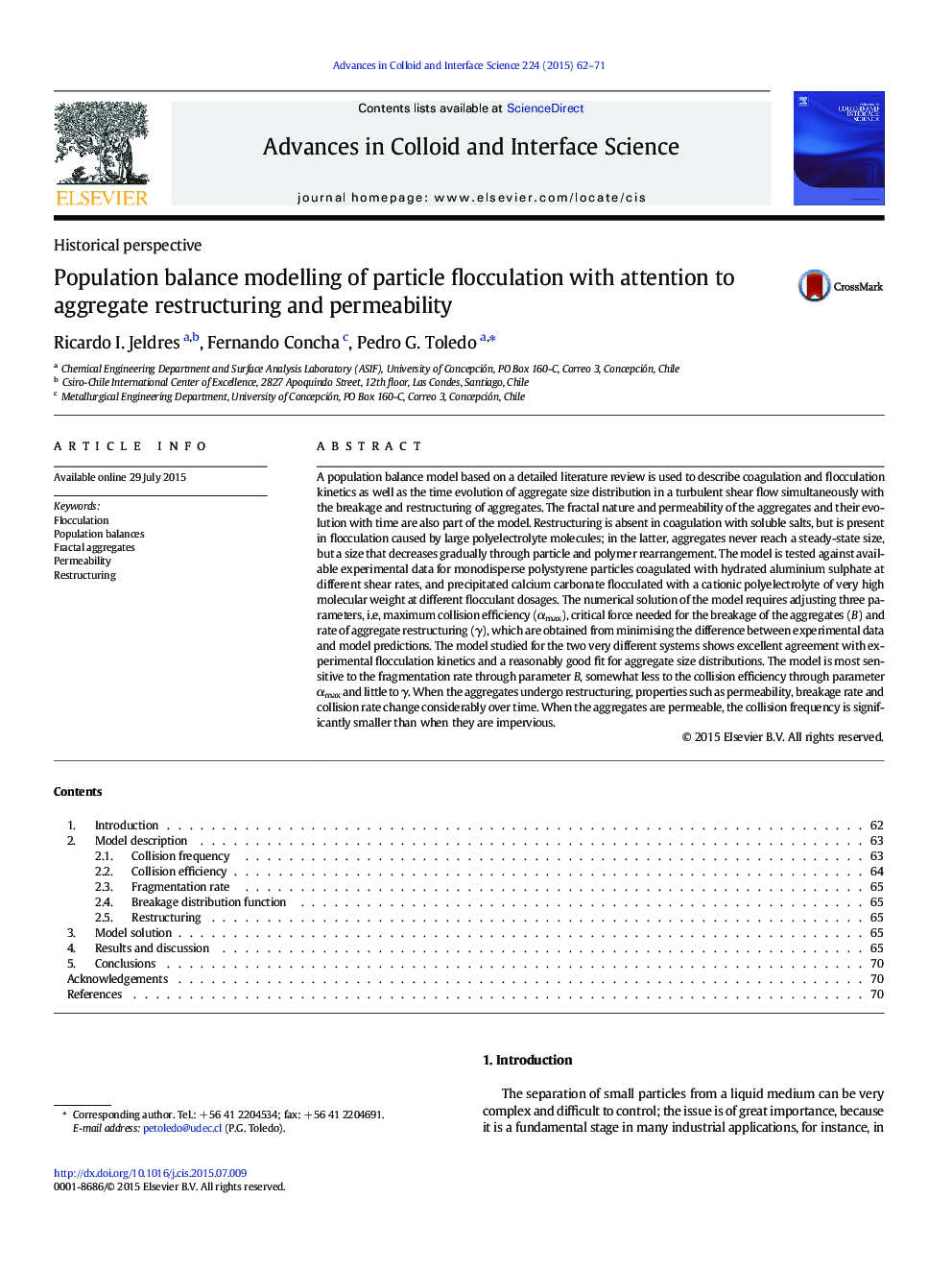| کد مقاله | کد نشریه | سال انتشار | مقاله انگلیسی | نسخه تمام متن |
|---|---|---|---|---|
| 590625 | 1453539 | 2015 | 10 صفحه PDF | دانلود رایگان |
• A population balance model is used to describe flocculation kinetics.
• Fractal nature and permeability of aggregates and its evolution with time are considered.
• The model shows excellent agreement with data available in the literature.
• The model is most sensitive to fragmentation.
• Permeability, breakage and collision rates change considerably with restructuring.
A population balance model based on a detailed literature review is used to describe coagulation and flocculation kinetics as well as the time evolution of aggregate size distribution in a turbulent shear flow simultaneously with the breakage and restructuring of aggregates. The fractal nature and permeability of the aggregates and their evolution with time are also part of the model. Restructuring is absent in coagulation with soluble salts, but is present in flocculation caused by large polyelectrolyte molecules; in the latter, aggregates never reach a steady-state size, but a size that decreases gradually through particle and polymer rearrangement. The model is tested against available experimental data for monodisperse polystyrene particles coagulated with hydrated aluminium sulphate at different shear rates, and precipitated calcium carbonate flocculated with a cationic polyelectrolyte of very high molecular weight at different flocculant dosages. The numerical solution of the model requires adjusting three parameters, i.e, maximum collision efficiency (αmax), critical force needed for the breakage of the aggregates (B) and rate of aggregate restructuring (γ), which are obtained from minimising the difference between experimental data and model predictions. The model studied for the two very different systems shows excellent agreement with experimental flocculation kinetics and a reasonably good fit for aggregate size distributions. The model is most sensitive to the fragmentation rate through parameter B, somewhat less to the collision efficiency through parameter αmax and little to γ. When the aggregates undergo restructuring, properties such as permeability, breakage rate and collision rate change considerably over time. When the aggregates are permeable, the collision frequency is significantly smaller than when they are impervious.
Figure optionsDownload as PowerPoint slide
Journal: Advances in Colloid and Interface Science - Volume 224, October 2015, Pages 62–71
